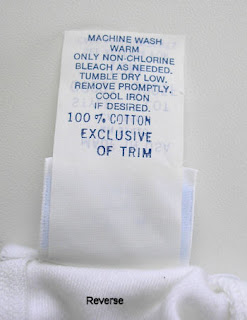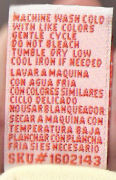I want to design skirts with elastic waists and a ties that are sewn in by the hem, which then connect to a bow. Is this not acceptable to the Drawstring rule CPSIA? So confused on this. If isn't acceptable, can I do a skirt with elastic waists and sew a bow in the middle?In the United States there is a safety rule about drawstrings on children's upper outerwear.** This rule does not allow drawstrings in hoods or waists of jackets or hoodies, for example. A drawstring is a cord with or without a toggle that is inserted in a channel. The intent of a drawstring is to cinch up a waist or hood opening to make it smaller. This rule was enacted because children have died when the toggle or knot on the drawstring became entangled on playground equipment and bus doors. It appears the CPSC has added a bit of clarity to the original rule. You actually can have drawstrings so long as the drawstring does not extend more than three inches and has been securely stitched through in the middle of the channel so it cannot be pulled out.
 |
| This hoodie uses ribbing to help it fit closer around the head, instead of a drawstring. |
But if I were you, I would avoid using drawstrings altogether in children's clothing. The reason is rather simple. There continue to be drawstring recalls even with almost no reports of injury or death. As of 2012, there have been more than 130 recalls involving drawstrings. The most recent is of a rain poncho. In this example it's clear there are no toggles or knots on the drawstring, the string is just too long (no reports of injury). The rule covers children 2T-16, but there have been recalls on infant clothing too. There was an odd recall of an elastic waist belt on a jacket (no injuries).
The recent rule revision appears to focus almost entirely on upper outerwear like jackets, sweaters, and hoodies. But historically there have been recalls on pants with drawstring waists. For this reason, I do not recommend drawstrings on any children's clothing. The risk is too great. Even though the majority of the recalls in the last 10 years have had no injuries or death, there have been a few. Also, the CPSC seems to inconsistently apply the rule, including the apparent exception of a three inch extension. There is just no way to predict what might happen.
To answer the first question above, I would try to avoid sewing things onto the ends of ties. That seems to fall into the drawstring with toggles or knots category. I think a bow sewn securely through on top of an elastic waist should be ok.
Waist ties and belts have not been involved in any product recalls, as far as I know, and are not included in this rule. Girls dresses, in particular, frequently have waist ties or belts. Even though the rule excludes this type of application, I would still exercise caution. Waist ties should only be long enough to tie with tails that are not too long. The tail of a belt or waist tie should not extend below the hem of a dress or touch the floor - it could become a trip hazard. Also, be sure there are no knots or toggles on the ends.
BTW, there is an ASTM standard for drawstrings, ASTM F1816. It costs $42 to buy a copy of this rule.
*I'm not a lawyer. The statements above are my opinion and should not be construed as legal advice on how to comply with government regulations. If you are manufacturing children's products, you should seek legal advice, follow all applicable rules, and seek out a certified testing laboratory as required.
**The CPSC has updated their website since I last visited and they have made it even more difficult to find safety rules with their "robot regulator". You have to jump through a questionnaire to find the safety rule you are looking for. This is the direct link to the drawstring rule, however long it remains a valid link.



























